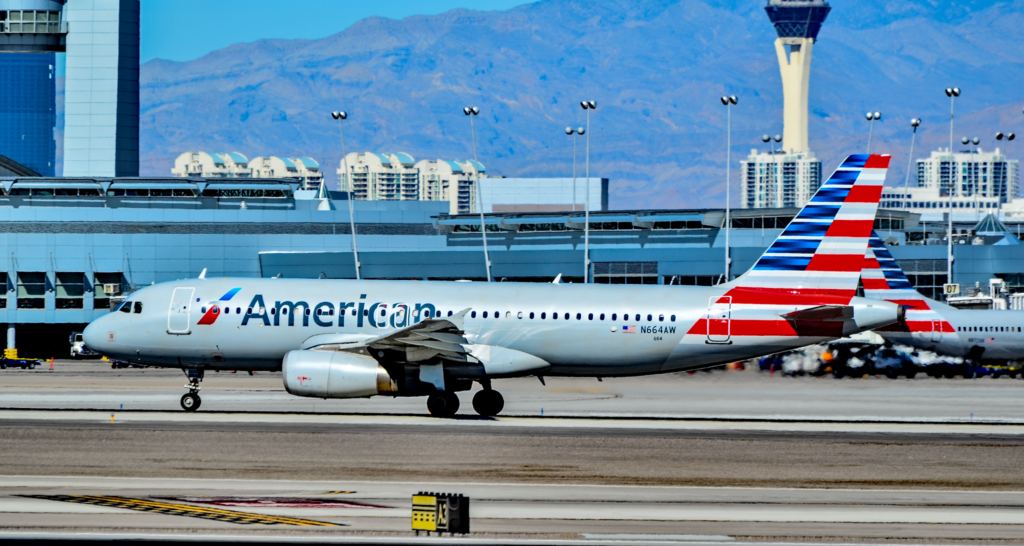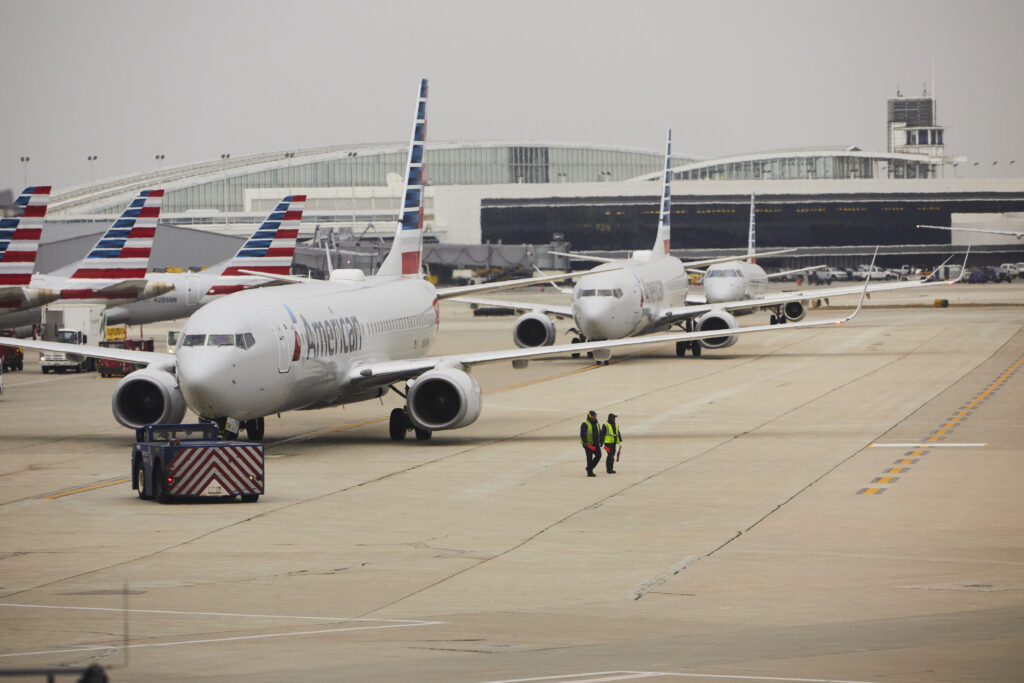FORT WORTH- American Airlines (AA) recently drew attention for a long-standing typo on its safety cards: “Use Seat Bottom Cushiom For Flotation.” The error appears on aircraft like the Airbus A320, where seat bottom cushions are designated flotation devices in water emergency evacuations.
Reported by View From The Wing, this mistake highlights a surprising gap in oversight. Despite FAA regulations and rigorous safety checks, a simple spelling error has persisted unnoticed across many planes, raising questions about quality control.

American Airlines’ “Cushiom” Error
Under Federal Aviation Regulations 14 CFR 25.1415(e), airlines operating over water must provide approved flotation means within easy reach of each passenger.
American Airlines fulfills this requirement by designating the seat-bottom cushion as an emergency flotation device.
Passengers are instructed to remove the cushion and use it by slipping their arms through the straps or holding it against the chest while treading water.
Despite the critical nature of these instructions, the misspelled word “Cushiom” appears on safety cards aboard certain A320 aircraft.
This error has remained uncorrected for years, even though it was previously reported. Given that all other aspects of aviation safety undergo strict review, the persistence of such a basic mistake is puzzling.

Implications for Passenger Safety
Clear communication is essential during emergencies. While the misspelling does not render the flotation method unusable, it can create confusion at a critical moment.
In high-stress scenarios, passengers may hesitate or misinterpret instructions if visuals or text appear incorrect.
The typo also undermines confidence in the airline’s overall attention to detail. Safety materials are expected to be accurate and professionally maintained.
This lapse suggests potential gaps in internal review processes, especially when compared to the precision required in mechanical and operational safety protocols.

FAA Quality Checks
The FAA enforces strict regulations across all facets of airline operations, including aircraft signage and safety materials.
Airlines, in turn, must adhere to internal quality control processes to meet these federal standards.
However, signage containing the “cushiom” error appears to have escaped both FAA certification reviews and routine internal inspections.
American Airlines employs over 130,000 people, many involved in safety-critical roles. The presence of this typo indicates either a breakdown in communication review processes or a lack of priority given to minor textual elements in non-electronic safety placards.
Even though the seat cushion’s function remains unaffected, the typo casts doubt on the thoroughness of American Airlines’ review systems, especially when compared to the rigor applied in other aspects of safety protocol.

Public Perception
In the aviation industry, every detail counts. Misspellings on safety signage may not lead to direct harm but can affect public perception of a carrier’s professionalism and diligence.
For an airline that operates one of the largest fleets globally, such visual errors are more than cosmetic, they shape passenger confidence.
This situation also raises a broader industry concern: how do similar minor lapses escape routine inspection in highly regulated environments?
It suggests that while mechanical and operational checks are rigorous, visual and textual audits may be deprioritized, especially if they’re considered non-critical to aircraft performance.
Stay tuned with us. Further, follow us on social media for the latest updates.
Join us on Telegram Group for the Latest Aviation Updates. Subsequently, follow us on Google News

